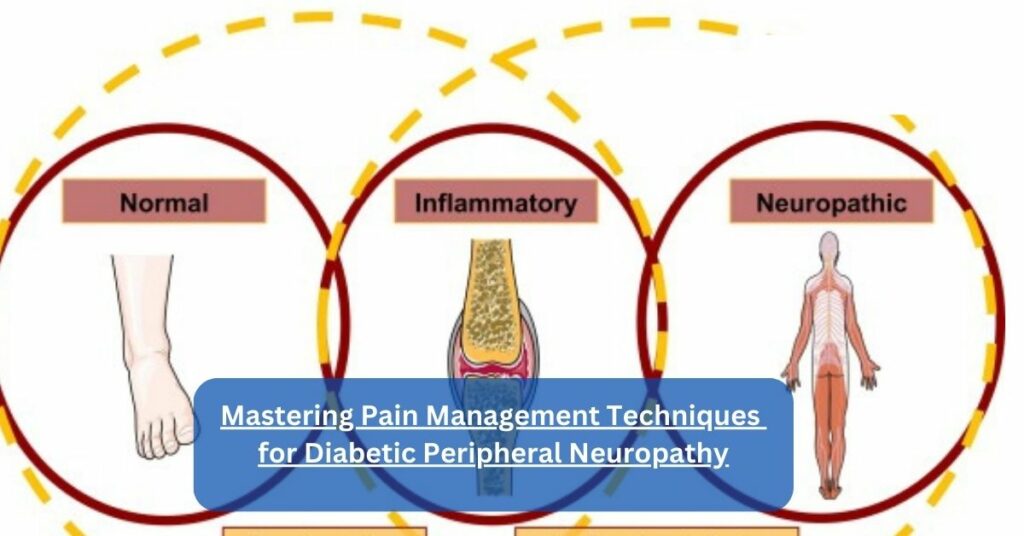Mastering Pain Management Techniques for Diabetic Peripheral Neuropathy

Diabetic peripheral neuropathy is a type of nerve damage that can occur in individuals with diabetes. It is a common complication of diabetes and often develops over time due to prolonged exposure to high levels of blood sugar. During an initial neuropathy diagnosis, a pain management Dr evaluates the severity to promote early and efficient care. Effective management helps alleviate disabling symptoms of diabetic neuropathy, such as pain and numbness in the legs. Here are some of the pain management techniques for diabetic peripheral neuropathy:
Glycemic Control
Maintaining tight and stable glycemic control has been shown to decrease the speed of neuropathic progression. Your pain management physician can implement a glycemic control plan to minimize blood glucose swings. This can include monitoring blood glucose levels and adjusting them as needed through insulin, oral medications, or diet.
Glycemic control can help prevent involuntary hypoglycemia and hyperglycemia, which may induce and worsen neuropathic pain. Involuntary movements associated with hyperglycemia or high blood sugar levels include tonic-clonic seizures, epilepsia partialis continua, and focal seizures. Movements associated with hypoglycemia or low blood sugar levels include seizures and hyperkinetic movement complications that affect the temporal lobes, substantia nigra, and basal ganglia.
Medication
The American Academy of Neurology and the American Academy of Physical Medicine and Rehabilitation recommend pregabalin for managing diabetic neuropathic pain. Pregabalin helps lower the sensation of pain by inhibiting neurotransmitters like glutamate and lowering hyperexcitability near the spinal cord. This has shown to improve quality of life in some patients.
Other treatments include gabapentin, which can lower neuropathic pain by calming down the nerves. Gabapentin has been shown to successfully relieve pain in patients showing symptoms of chronic neuropathic pain. Opioids like dextromethorphan, tramadol, oxycodone, and morphine sulfate may also be prescribed to manage painful diabetic neuropathy. They function by binding to receptors in the brain and lowering the intensity of pain signals reaching the brain.
Your pain management Dr can choose to use antidepressants like duloxetine to manage pain linked to diabetic peripheral neuropathy. The antidepressant functions by enabling serotonin and noradrenaline to continue circulating within the brain. This helps diabetic neuropathy patients feel pain relief for longer.
Topical Therapy
Individuals with problematic interactions to available oral treatments can opt for topical therapy, which involves applying medication or cream directly to the skin. Topical therapy can be effective for patients experiencing localized pain in particular body areas, such as the feet or hands. Some topical therapy medications include capsaicin cream and transdermal lidocaine. These medications desensitize or block local pain nerves in the affected area.
Physical Therapy
Physical therapy uses a combination of focused exercises, massages, and other techniques to help lower pain while increasing strength and range of motion. Aerobic exercises can help treat numbness and pain in body parts such as the legs and hands. Manual therapy, which works by applying gentle pressure or vibrations to the body to enhance sensation, can also help lower pain connected to diabetic neuropathy.
Physicians may recommend electric nerve stimulation to achieve a degree of symptomatic pain relief. This therapy involves using a small, battery-operated device that delivers mild electrical impulses to nerve fibers through electrodes placed on the skin. The electrical stimulation aims to activate nerve fibers, primarily sensory nerves, which can interfere with pain signals being transmitted to the brain.
Contact a Pain Management Dr Today
Diabetic peripheral neuropathy can be managed through early identification and tight glycemic control to maintain normal blood sugar levels. You can work with your pain management Dr to implement strategies involving medications, physical therapy, or electric nerve stimulation. Contact a pain management specialist to learn more about managing the symptoms of diabetic neuropathy.



